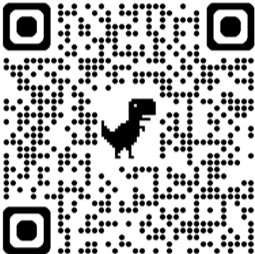Agents of Infectious Disease
Bingo!
Create multiple-choice games on Wisc-Online and play them on our Chakalaka mobile app!
But that's not all! Explore educational games created by others. Simply search by category or enter agame code number and dive into a world of learning and fun.
Download the Chakalaka mobile app here:

Topics of this game:
- Primary method used to differentiate bacteria
- Have a large external cell wall and stain purplish-blue
- Have a thin internal cell wall and stain pink
- Bacteria that grow in low oxygen environments
- Protects some bacteria from drying out and shields from detergents or phagocytosis by WBCs
- This causes severe disease, produced by Clostridium species
- Hair-like structures on the outside of a cell
- Dormant forms of bacteria that may even survive autoclaving!
- viruses that contains RNA
- belong to the helminth group: Cestodes
- Myocoptes musculinis, Radfordia affinis, Myocoptes musculi
- Pneumonyssus simicola
- commonly called mange; in dogs, cats, rabbits, humans, etc.
- found in hair follicles and sebaceous glands of dogs and other animals
- Polyplax serrata
- host-specific, spread by direct contact
- unique arthropods: lack jointed legs, internal parasite, zoonotic, found in resp. tract, skin, SQ of reptiles
- dog & cat flea, also the intermediate host for Dipylidium caninum
- have a narrow head
- have a wide head
- In the Ascarid group, canine roundworm
- mouse pinworms, passed by fecal-oral route
- hookworm, zoonotic, found in Old World Monkeys
- canine heartworm, in the nematode group
- thorny-headed worms, require an intermediate host such as a cockroach or beetle
- Parasitic leeches, ectoparasites, infest primates and other animals by invading nose, mouth, pharynx or skin
- elongated, non-segmented, cylindrical bodies, include whipworms, ascarids, pinworms, hookworms, filaria
- flukes, flat, complex life cycle, larval forms hatch in water, migrate to the liver
- rice-like segments of tapeworms, contain fertilized eggs
- Apicomplexan organism (form spores), cats are the definitive hosts
- flagellate protozoan parasite
- group of fungi that cause ringworm
- zoonotic, causes lethargy, tremors, and partial paralysis in rabbits
- affects Xenopus laevis, thickens the frog's skin, inhibiting oxygen flow, causing fatal wasting disease
- type of pathogenic fungi (systemic mycoses) causes fatal disease in immunosuppressed animals
- misshapen proteins that invade host cells, difficult to inactivate because they do not contain nucleic acid
- can only replicate inside a host's cell, contains a strand of nucleic acid, a protein capsid, lipid envelope
- contains ribonucleic acid
- contains deoxyribonucleic acid
- smallpox/vaccinia in humans, mouse pox in mice, monkey pox in NHPs, orf in small ruminants
- type of virus highly resistant to break down in the environment
- Macaques that are asymptomatic may shed this virus, type of herpesvirus, fatal to humans
- an orthomyxovirus
- paramyxovirus, infects NHPs exposed to infected humans
- common coronavirus infection in mice, causes immunesuppression
- highly contagious coronavirus in rats, causes disease of the eye and lymphatic system
- means arthropod-borne, ticks, mosquitos, mites, lice carry these viruses from one animal to another
- an arbovirus
- a prion, bovine spongiform encephalopathy
User comments are currently unavailable. We apologize for the inconvenience and are working to restore this feature as soon as possible.

